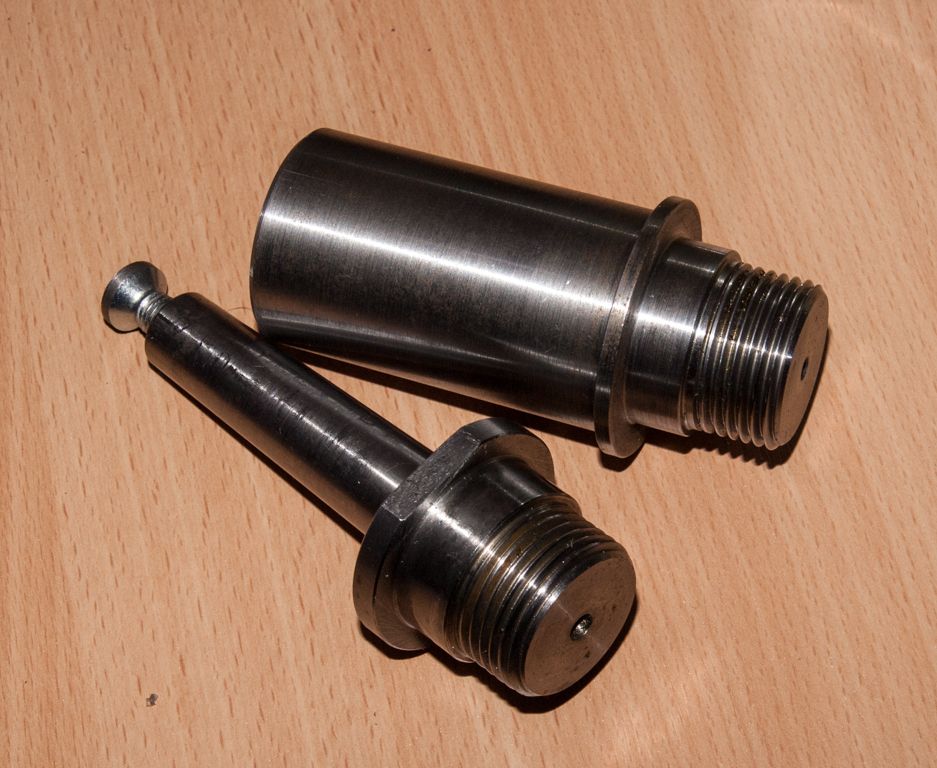Hi,
I regularly visit the American Home Shop Machinist website which may be known to some members here. An issue that quite often rears its head is which element of a screw-nose lathe's spindle determines concentricity when fitting a chuck? There seem to be two schools:
(1) The Screw School who maintain that the spindle screw is the paramount factor. They view it as a sort of spiral cone which, if closely fitted to the chuck backplate's female thread, performs a self-centering function. In their eyes, as the backplate spigot comes into contact with the spindle flange, the backplate thread slope is forced to rise up the the spindle thread slope until the two components lock. This tends to equalise any thread clearance around the diameter and thus self-centres the chuck. They hold that that the so-called spindle 'register' performs no useful function and claim that this term is a misnomer. So, when making a chuck backplate the key point is to machine its thread to be as close a fit on the spindle as possible short of causing a seizure.
(2) The Register School who maintain that the chuck register should be seen as acting something like a locating dowel. Here, the crucial factor is to fit the backplate spigot's recess as closely to the spindle register as possible short of, again, causing seizure. Under this view the backplate's female thread should be an easy fit on the spindle thread — close enough to ensure locking but not so close as to interfere with or constrain the register fit.
One 'authority' cited by the Screw School is Tony Griffiths of Lathes UK — see here (under 'Making a Backplate for a Screwed Spindle Thread', final paragraph):
**LINK**
Basically, he says that he used to take the register as the reference point until he encountered a Boxford spindle with no register and yet which showed high concentricity.
Yet only last night I was reading an article by Harold Hall covering this very issue (MEW155, Page 12) and he says of backplate fitting 'Most important is the parallel bore' [i.e. the backplate recess]. Further, 'As the location of the device is achieved by the parallel bore, the thread needs to be a little on the generous side'. (To be fair to Harold, I think his professional background is in electrical engineering so I don't suppose he'd claim to be an authority on mechanical engineering).
So, can any member with a professional background in mechanical engineering point to an authoritative pronouncement on this, please?
Joe
Edited By joegib on 17/10/2012 13:39:25
Edited By joegib on 17/10/2012 13:47:02
joegib.





